October 2020 Monthly Report

In this blog post we discuss our October 2020 report and provide more information on how to interpret the results as well as additional information on common cutting agents. The PDF report can be found at the end.
Insight for the October 2020 Monthly Report
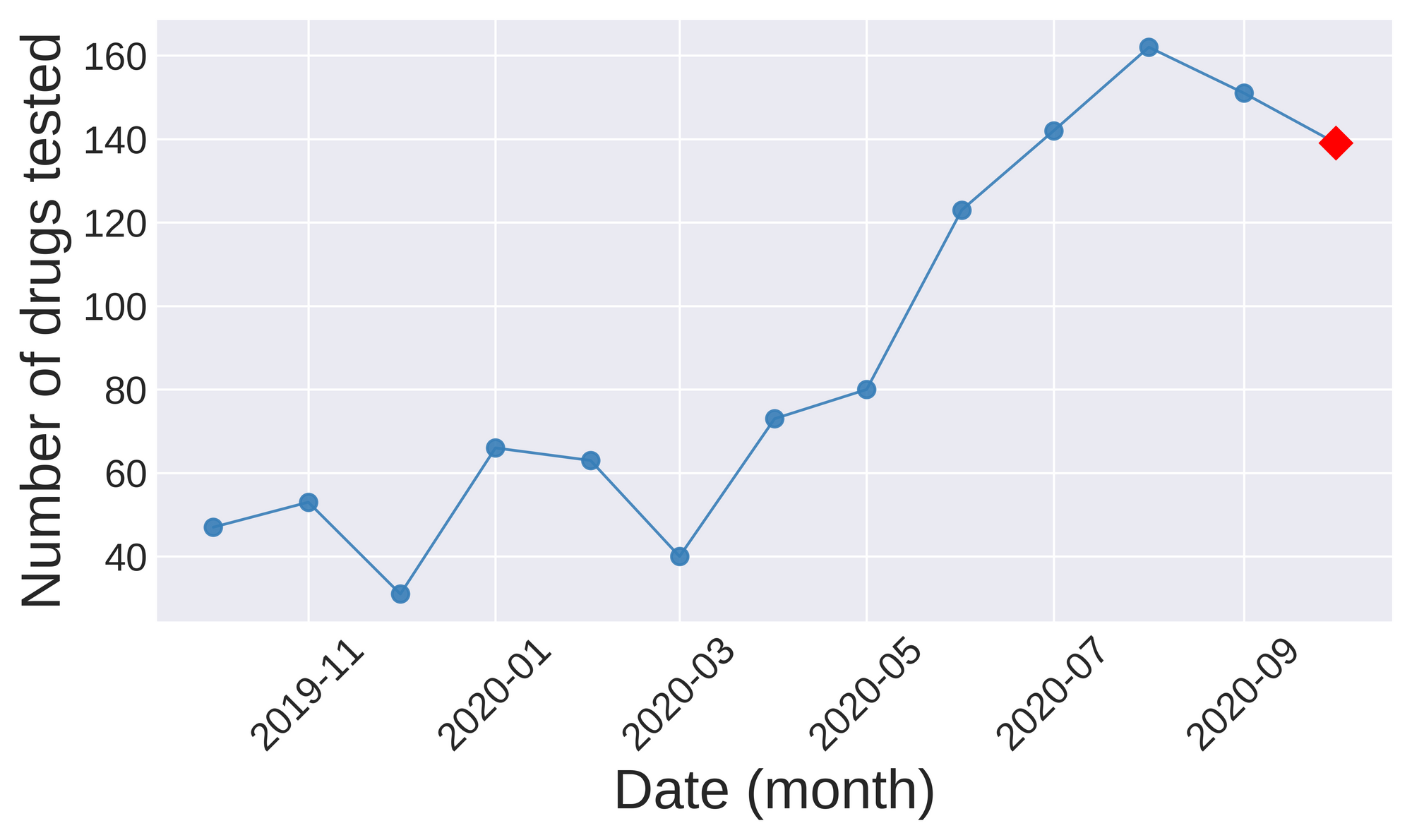
In October we checked 138 samples. As seen in Figure 1, our uptake has remained consistently high for the past five months. Compared to October 2019 (47 samples), we saw a 194% increase in uptake. This demonstrates the continued relevance of our service amidst the dual public health crises.
EXPECTED OPIOID DOWN
Xylazine was detected in an opioid-down sample this month by our GC-MS (gas chromatography - mass spectrometry). This is a common sedative used in veterinary medicine, but is not FDA approved for human consumption. Read this paper by the BCCSU for more information. The Toronto Drug Checking Project also reported xylazine for the first time last month. See their report here and learn more about xylazine here. Note, the proportion of opioid-down samples containing xylazine may be higher as our data is preliminary.
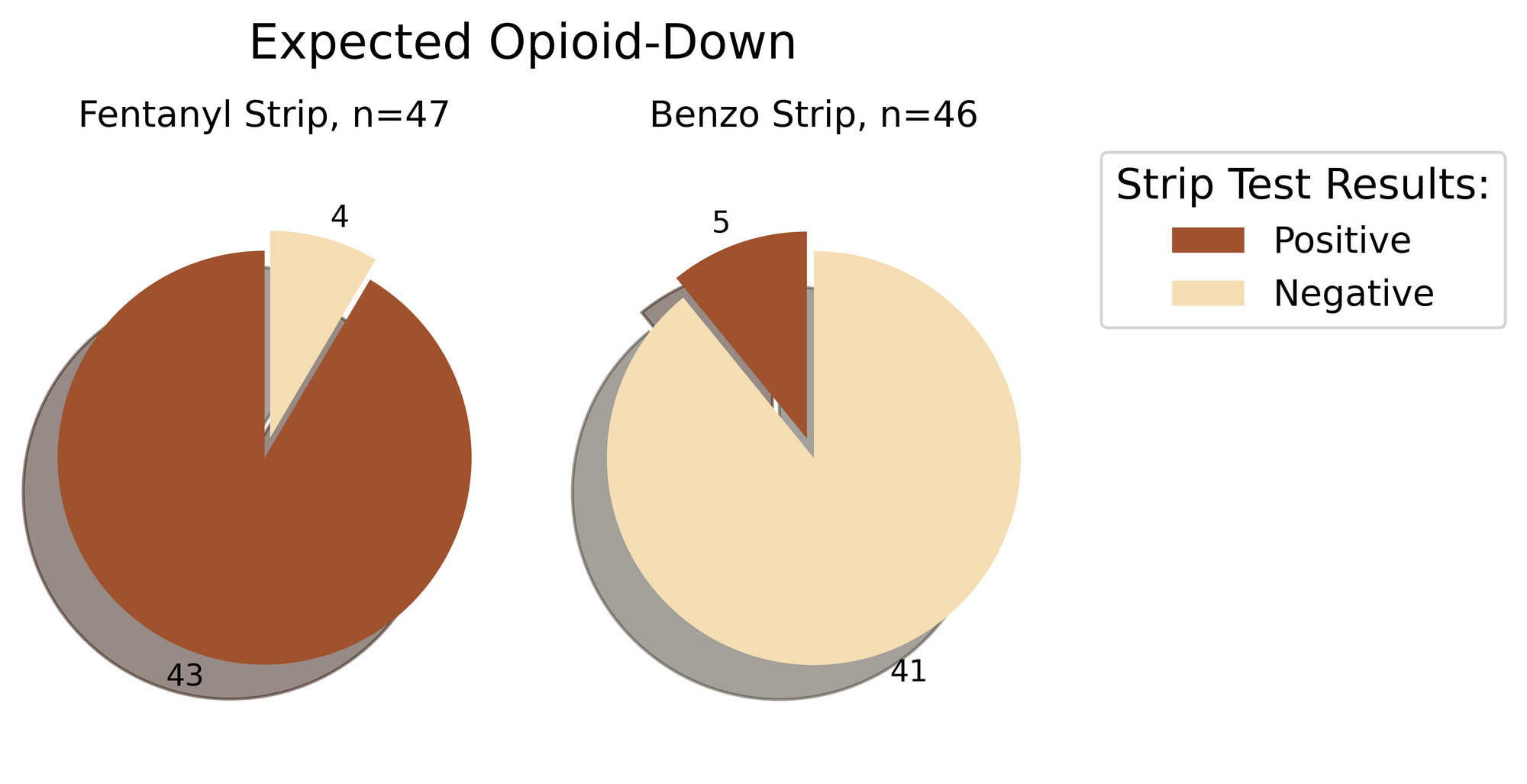
Of the 47 samples expected to be opioid-down, 10 (or 21%) contained either a benzodiazepine (benzo) or etizolam, which potentiate the depressant effects of fentanyl and to which Naloxone is ineffective. As etizolam is not directly in the benzo class, it often does not react with the benzo strips, which is why Figure 2 contains only five positive results.
As mentioned above, benzos complicate overdose reversal and can lead to ‘black out’ events. The ongoing trend of benzo adulteration seen across Canada in the opioid-down supply, along with novel adulteration, demonstrates the need for interventions like decriminalization and the provision of safer alternatives to the street supply.
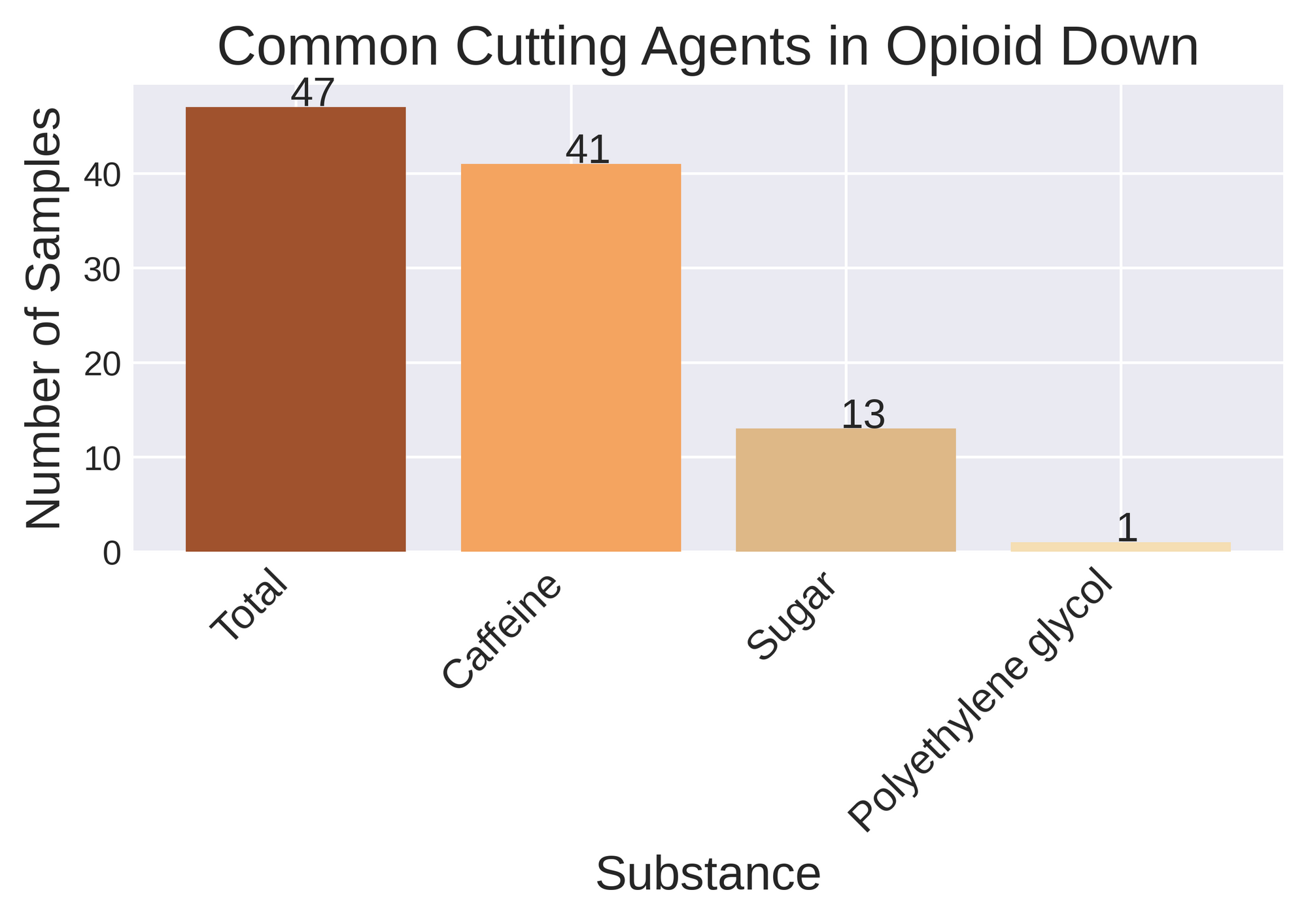
Caffeine is found in almost every sample in the opioid-down supply, making it the most common cutting agent we find. There were six exceptions to this where: a sugar was the only cut (2), heroin base was the active with no fentanyl present (3), and phenacetin was found with no active detected (1).
Polyethylene glycol is an unusual cut found in one sample this month. This is a laxative solution that increases the amount of water in the intestinal tract to stimulate bowel movements. Read more here.
EXPECTED COCAINE
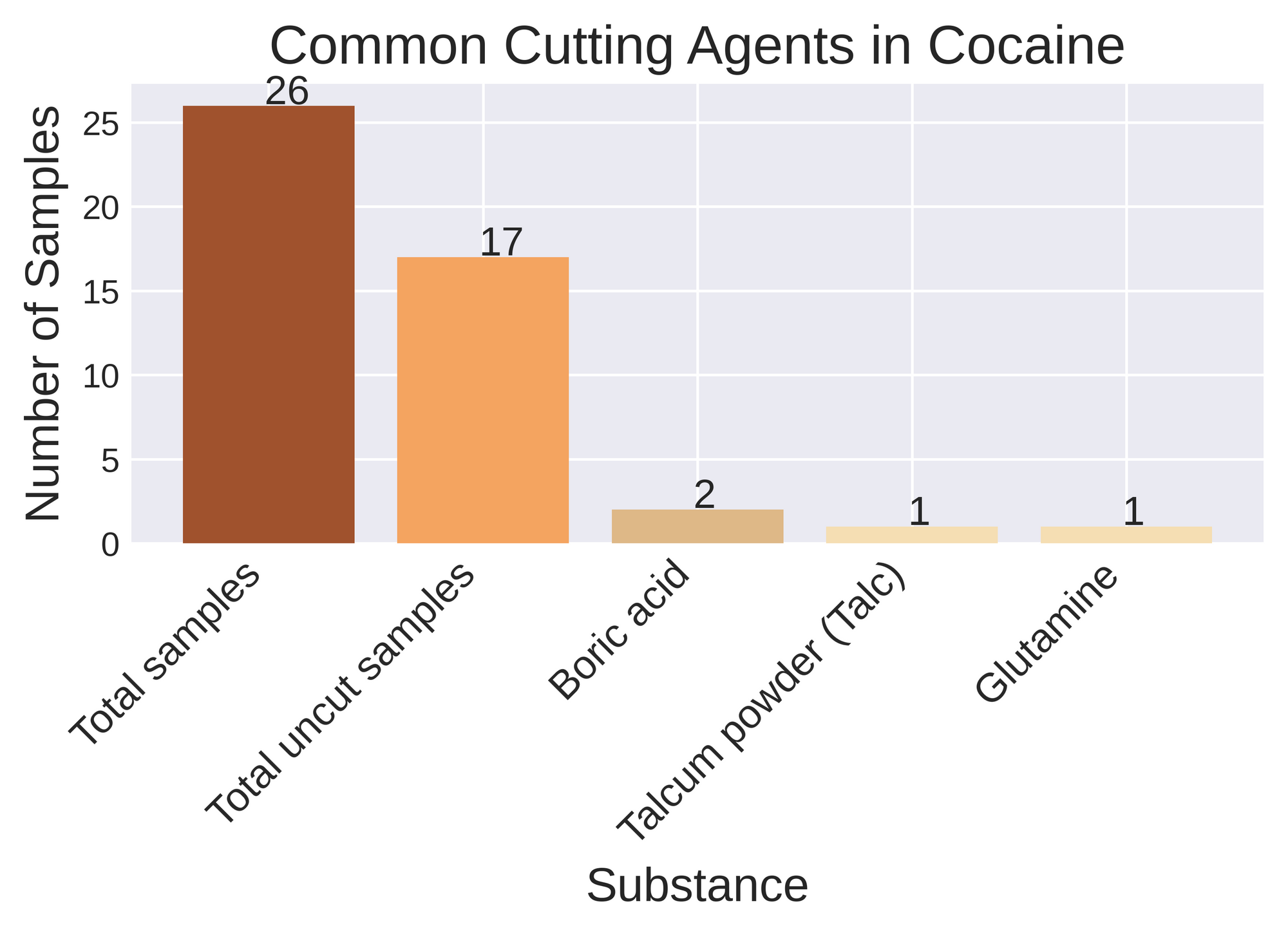
In cocaine, 17 of the 26 samples had no cuts or adulterants detected. This showcases that drug checking isn’t just about screening for dangerous substances, it is also a critical tool for confirming that the active in a substance is in fact the active expected. However, within cocaine samples, we often find a high variability in cutting agents when they do appear.
This month we found boric acid, which is a common additive in pharmaceutical products, cosmetics, lotions, soaps, etc. Read more here. Also, talcum powder (TALC) which has historically been a common cut in cocaine due to its widespread availability, but this is the first time we have identified it. Though TALC is generally inert, it can be hazardous if injected due to its ability to clog blood vessels. Use filters when injecting! Read more here.
EXPECTED METHAMPHETAMINE
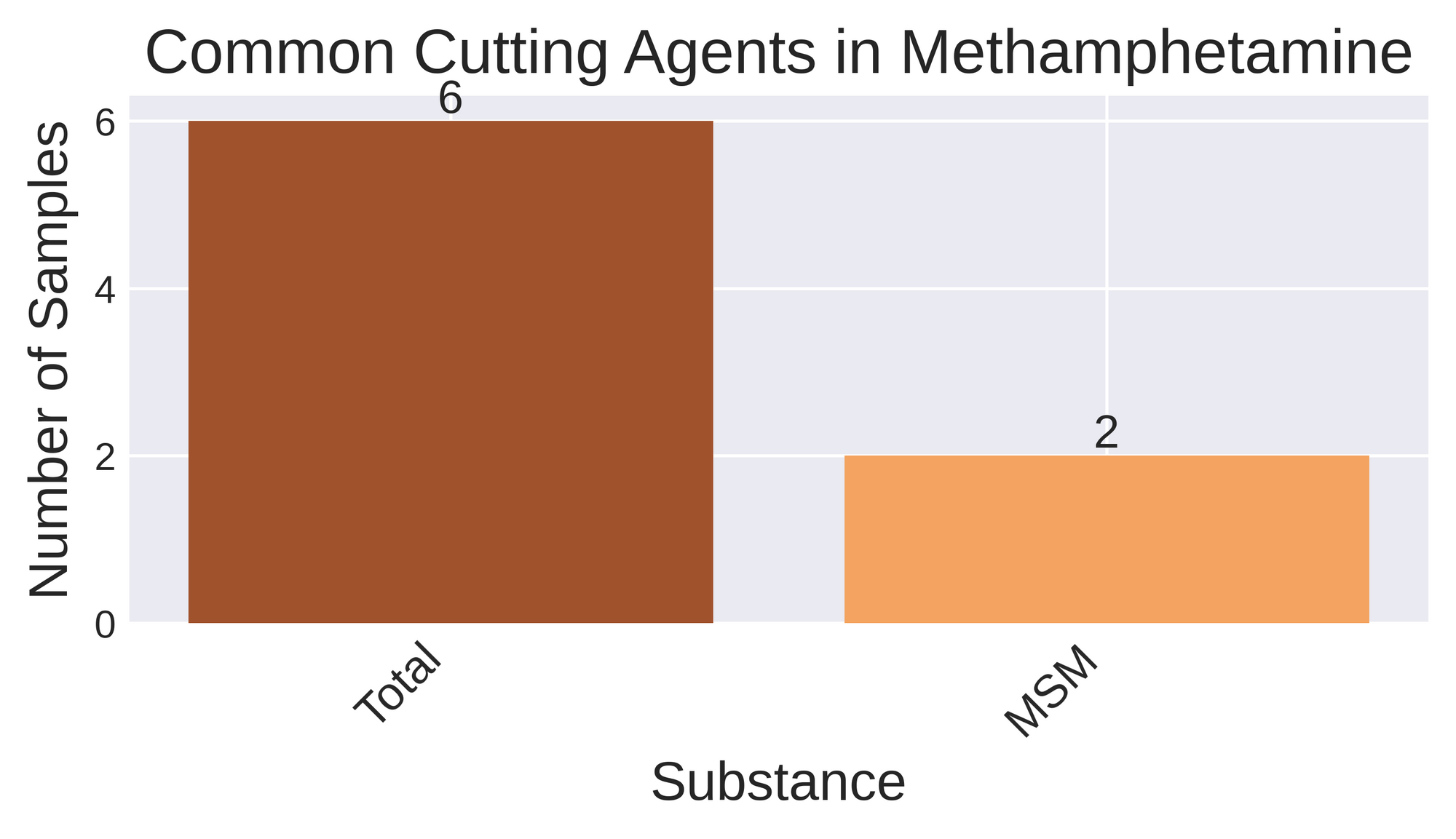
For samples expected to be methamphetamine, we often detect no additional cuts or adulterants. As shown in Figure 5, dimethylsuflone (MSM) was the only cutting agent found in October. MSM is a common cut due to its ability to crystalize and it’s similar appearance to methamphetamine. Read more here.
Check back next month for the release of our November report!
